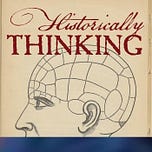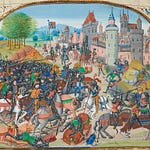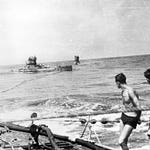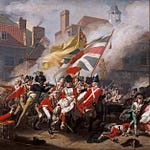Originally published on May 8, 2019 (Episode 110)
Introduction
In the summer of 1780, Britain seemed to have regained control of Georgia and South Carolina. The British had destroyed two American armies, one taken at the siege of Charleston, the other destroyed by Charles Lord Cornwallis Yet within a year, the dream of a “Southern Strategy” was in ruins. By October, Charleston and Savannah were all that remained of British possessions in the South, and Cornwallis was besieged in Yorktown, Virginia
John Buchanan traces this pivotal period of American history in The Road to Charleston: Nathanael Greene and the American Revolution (University of Virginia Press, 2019). Following his earlier The Road to Guilford Courthouse: The American Revolution in the Carolinas (1999), Buchanan shows how Nathanael Greene’s decision to turn south after the Battle of Guilford Courthouse and attack into South Carolina transformed the Southern Campaign. The result is a vivid narrative of leadership, resilience, and the unraveling of Britain’s hopes for victory in the American Revolution.
About the Guest
John Buchanan is an independent historian and author of acclaimed works on the American Revolution, particularly the Southern Campaigns. His books combine archival research with narrative storytelling to bring battles, commanders, and common soldiers to vivid life.
For Further Investigation
John Buchanan, The Road to Charleston: Nathanael Greene and the American Revolution (University of Virginia Press, 2019)
—, The Road to Guilford Courthouse: The American Revolution in the Carolinas (1999)
Nathanael Greene Papers: A Finding Aid to the Collection in the Library of Congress
The Southern Campaign of the American Revolution—a National Park Service overview
Listen & Discuss
Why did the British Southern Strategy fail so spectacularly?
What qualities made Nathanael Greene such an effective commander?
👉 Share this with a Revolutionary War enthusiast—the Southern Campaign doesn’t get enough attention.










